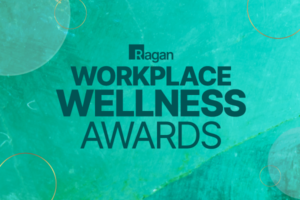Curating the week in wellness Jan. 31-Feb. 4, 2022
Are increased insurance rates for unvaccinated employees the next fight? Explore Black History Month coverage with the theme of health and wellness.

Hello, wellness pros!
Punxsutawney Phil saw his shadow on Groundhog Day, so we are in for six weeks more winter (unless you believe Chuck from Staten Island). Regardless, we are here with a collection of thought-provoking articles, tips and takeaways for the week.
Please get in touch with any ideas, suggestions or feedback on how we can serve you better or cover topics that are top-of-mind at your organization. Email: kaceyl@ragan.com.
1. What comes next for employer vaccine mandates?
After the Supreme Court struck down the Occupational Safety and Health Administration’s emergency temporary standard for employers with 100 or more employees to vaccinate-or-test in January, the issue lands back in the hands of employers to set policies—or not.
CNN Business reports: “A survey by management consultant Gartner of more than 200 major employers last week found 30% still are requiring or will require their employees to get vaccines. Another 50% have policies in place or in the works to give employees a choice between vaccine or weekly tests. Only 20% are dropping all policies that would require action by their employees.”
While the mood for organization-wide vaccine mandates remains mixed, HR Dive investigates if other options are available, namely implementing insurance surcharges. Formal guidance has not been issued on this, but HR firm Mercer suggests a COVID-19 vaccination surcharge could fall into the “health-contingent wellness program category.” This follows the precedent set with insurance surcharges for tobacco users.
This comes against the backdrop of an Eagle Hill consulting survey from early January that reports 47% of respondents say unvaccinated employees should pay higher insurance rates. This is especially popular among baby boomers at 53% agreeing, while only 33% of Gen Z respondents did.
2. Celebrating Black History Month through the lens of health and wellness.
The Gallup Center on Black Voices is centering its 2022 Black History Month coverage and findings on reviewing historical trends plus highlighting how conditions can be improved today.
Camille Lloyd, director of the Gallup Center on Black Voices, and Whitney DuPree, associate director of the Gallup Center on Black Voices write, “This Black History Month, we at the Gallup Center on Black Voices look forward to honoring the triumphs, contributions and struggles of Black people in U.S. history. As the global pandemic enters its third year, this year’s focus on health and wellness provides an opportunity to honor our past, celebrate our achievements and press for progress.”
Throughout February, the center will examine how representation in healthcare, like in the workplace, impacts experiences and what it means overall for Black Americans’ health and well-being.
3. Destigmatizing mental health at the workplace.
Caring for employees’ mental health has become a primary concern for many employers, and there are a plethora of apps and resources available to offer help and support. The next hurdle, however, seems to be employee adoption and/or utilization. Protocol writes, “Despite earnest attempts at destigmatizing mental health at work, there’s still a perception that to disclose a mental health issue to a manager is to mark yourself with a scarlet letter.”
To help managers and decision-makers lead and respond to destigmatizing mental health in the workplace, Protocol shares four tips from psychologists, human resource experts and tech leaders.
- Take preventative actions and early intervention steps, which can be small gestures like incorporating a mini meditation into meetings.
- Give employees more control over determining the mental health support they need. This could mean working directly with employees to respond to needs, a stipend for mental health or encouraging the use of sick days for a mental break.
- Check that your culture is supportive around mental health. This can come in the form of messaging from leadership in sharing their own struggles openly or responding thoughtfully if an employee comes to them.
- Create a bar for disclosure and be open, if possible, to accommodations when approached.
4. Gap in employees utilizing benefits.
The “Mind, Body, and Wallet” study from Guardian Life Company finds a disconnect between how employers rate themselves on addressing wellness and how employees rate them, reports Benefits Pro.
Chris Smith, head of the Guardian’s Group Benefits business says, “Employers have a real opportunity to close the perception gap by revisiting how they support employee well-being and helping their workers more fully utilize the benefits they already provide.”
Case in point: The report finds 6 in 10 organizations say they address employees’ financial health “extremely well,” but only about 1 in 5 workers “strongly agree that their employer does a good job educating them on financial planning and how to achieve their financial planning goals.” Even zooming out, 54% of workers are aware of employer offered wellness programs, but only 28% have taken advantage of the services.
A report takeaway: It may be necessary for employers to reassess their communication strategies around benefits.
5. Questions to ask when purchasing employee health care.
With the rising of health care costs, employers must grapple with their own benefits strategy, especially as higher deductibles, higher co-pays and higher co-insurance being passed on to employees may actually be causing them to seek less or refrain entirely from care. Inc identifies five “savvy questions” to ask a health plan about their strategies and practices:
- “What does the health plan do to enhance the quality of and access to primary care and behavioral health services?”
- “How is the health plan working to connect plan members with the highest quality, most affordable health care providers?”
- “What payment incentive does health plan give health care providers to improve quality of care and reduce unnecessary spending?”
- “What resources does the health plan offer to plan members about the quality and prices of providers across specialties and health care settings?”
- “How does the health plan intend to reduce health care disparities and improve health outcomes among its covered population?”
COMMENT
Ragan.com Daily Headlines
RECOMMENDED READING
Tags: Black History Month, covid insurance premiums, employee benefits, health insurance, mental health, vaccine mandate






